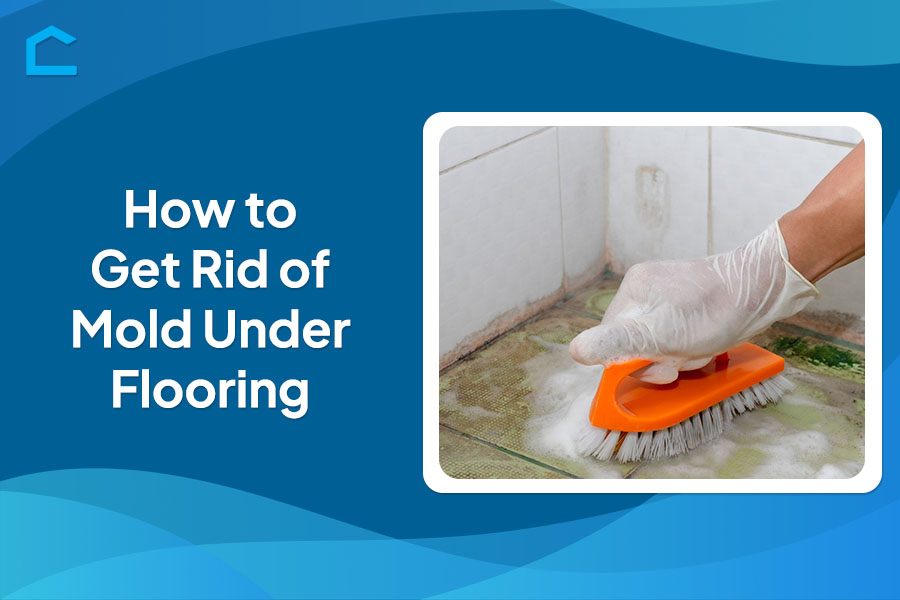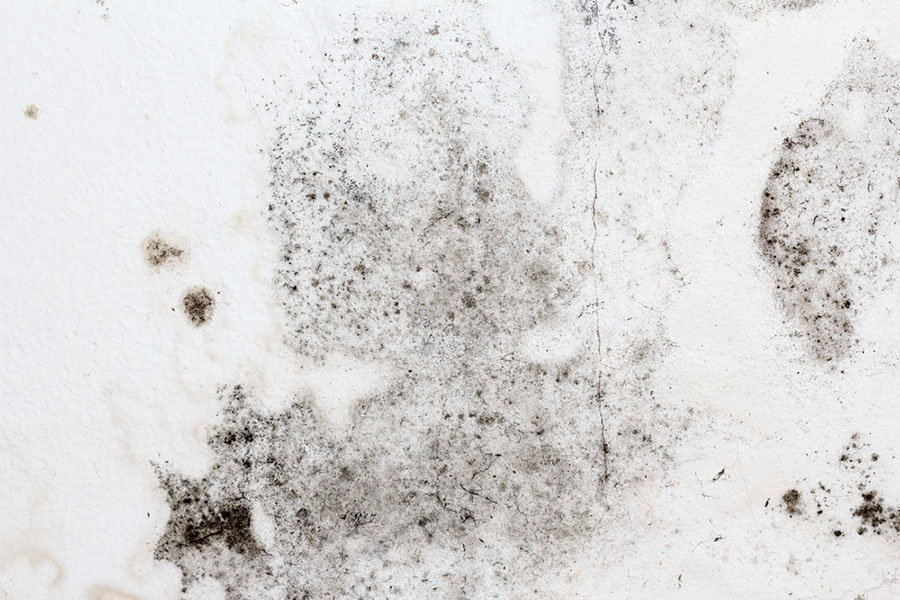How to Get Rid of Mold Under Flooring

Does your home have a musty smell or you have found black spot on your tiles or flooring? All these signs indicate to mold. Mold growth under flooring can be a challenging problem to tackle. It not only poses health risks but also compromises the structural integrity of your home. If left untreated, mold can spread rapidly, causing extensive damage.
Fortunately, from ventilation strategies and use of specialized products to eliminate mold to details of moisture control there are plenty of effective methods on how to get rid of mold under flooring. Whether you’re a DIY enthusiast or seeking professional assistance, this article will equip you with the knowledge to handle mold issues effectively.

Source: shutterstock.com / Photo Contributor: jax10289
What Causes Mold on Hardwood Floors?
Identifying mold under flooring is crucial before attempting any remediation. One obvious sign is visible fungal growth on the underside of the flooring, appearing as discolored areas or fuzzy colonies in various colors like black, green, white, or pink. Even if unseen, a persistent musty or earthy odor can indicate mold presence.
This odor is caused by microbial volatile organic compounds produced by spores. Other common signs include staining or discoloration on flooring materials. Also, look out for moisture issues like dampness or water stains. Another indicator is warping or buckling of the flooring itself.
These signs suggest a moisture problem conducive to mold growth. Promptly addressing suspected mold is important to prevent further spread and potential health risks. If unsure about the extent of the issue, consider seeking professional assistance for a thorough inspection and assessment.
Assessing the Extent of Mold Damage
After identifying mold presence under your flooring, it’s crucial to assess the extent of damage. Carefully inspect the affected area, looking for signs of wood rot like soft, spongy or crumbly wood on the flooring or subfloor materials. Check for structural weakening indicated by warping, sagging or other deformities that compromise integrity.
Use a moisture meter to measure moisture content, as high levels suggest an ongoing moisture issue fueling mold growth. In severe cases, seek professional assistance as certified mold inspectors have expertise and specialized equipment for thorough assessments.
Tools and Materials
Essential tools for mold removal under flooring include protective gear like gloves, goggles, and respirators, scrub brushes, HEPA vacuum cleaners, pry bars, and hammers. Cleaning supplies such as detergents and EPA-registered disinfectants are necessary.
Additionally, include bleach solutions, rags, and mops. Drying equipment like dehumidifiers, fans, and moisture meters aid in moisture control. Protective coverings like plastic sheeting and duct tape help contain the work area.
Additional materials may include replacement flooring and garbage bags for proper disposal.
Removing Mold Under Flooring
To safely remove mold under flooring, first prepare the work area by covering surroundings with plastic sheeting and ensuring proper ventilation. Wear personal protective equipment like gloves, goggles, and respirators. Remove any severely affected flooring sections using pry bars and hammers.
For less severe growth, scrub with detergent solutions, vacuum with HEPA filters, then apply EPA-registered disinfectants or bleach solutions per instructions. Thoroughly dry the area using dehumidifiers, fans, and moisture meters.
Properly dispose of contaminated materials in sealed bags. Clean and disinfect the work area and tools used. If dealing with extensive mold issues or concerns about safety/effectiveness, seek professional mold remediation assistance.

Source: shutterstock.com / Photo Contributor: 1EYEman
Repairing and Replacing Damaged Flooring
After mold removal, assess the extent of flooring damage to determine if repair or replacement is needed. Minor surface issues like discoloration or small rot areas may be repairable through sanding, refinishing, or patching with compatible materials.
However, severe damage, structural weakening, or widespread contamination likely requires complete flooring replacement. Choose new mold-resistant flooring options like hardwood, tile, or laminate. If dealing with significant damage or uncertainty, seek professional assistance right away.
Flooring contractors or mold remediation specialists have the expertise and the equipment necessary for tackling and dealing wih mold. They can ensure safe and effective repairs or replacements.
How to Get Rid of Mold Under Laminate Flooring
To address mold under laminate flooring, first, identify and fix any moisture sources like leaks. Clear the area, remove any mold-affected laminate planks using pry bars, and clean the exposed subfloor with detergent solutions. Then, thoroughly dry the area using fans or dehumidifiers. Scrub the affected spot with a water and detergent mix. Disinfect the area with EPA-registered products or bleach solutions per instructions.
Thoroughly dry the subfloor using dehumidifiers and fans before repairing or replacing damaged planks according to manufacturer guidelines. Install new planks with a moisture barrier or underlayment to prevent future growth. Maintaining proper ventilation is also crucial.
What Causes Mold On Hardwood Floors?
Mold can develop on hardwood floors primarily due to excessive moisture buildup. This buildup often results from high humidity, poor ventilation, or water leaks. Moreover, flooding or improper installation/maintenance can contribute to mold growth.
Inadequate air circulation, especially in basements or rooms without windows, creates an environment conducive to mold growth. Even small leaks from plumbing, appliances, or external sources like roofs can introduce enough moisture for mold to thrive on wood surfaces.
Major water damage events that leave standing water or wet materials in contact with floors increase mold risk significantly if not addressed promptly. Environmental factors like consistently high indoor humidity or proximity to water sources can also contribute to mold issues on hardwood floors.
Prevention Tips
Preventing future mold growth under flooring requires a multifaceted approach. Controlling moisture levels through proper ventilation, addressing leaks promptly, and using dehumidifiers is crucial.
To keep mold from reappearing, keep indoor humidity levels below 60% with the help of dehumidifiers and air conditioners. If you notice any plumbing or roof leaks, address the leaks promptly to prevent the water from seeping under the flooring to reduce moisture build-up and let the mold grow under the flooring.
Regularly clean floors and remove spills quickly to prevent moisture accumulation.In case of broken tiles or flooring seal porous flooring materials like wood or concrete to prevent moisture penetration.
Lastly, establish a cleaning routine to remove dirt and dust, and periodically check under appliances and fixtures for any signs of moisture or mold. Early detection and remediation can prevent costly and extensive mold issues.

Source: shutterstock.com / Photo Contributor: myboys.me
Conclusion
We trust this comprehensive guide has provided you with a thorough understanding of how to get rid of mold under flooring. By following the step-by-step instructions, you can effectively address this persistent problem. Implementing the recommended strategies is crucial to restoring a healthy living environment.
Remember, tackling mold growth requires patience, diligence, and a proactive approach. Continuous monitoring and maintenance are crucial to prevent future infestations.
With the knowledge gained from this article, you are now better equipped to identify the root causes and employ the appropriate remediation techniques. A mold-free living space not only enhances your quality of life but also protects the structural integrity of your property.
